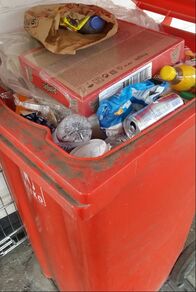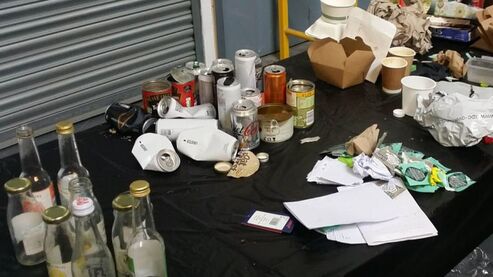How to do an Office Waste Audit
What’s in your bin? In order to understand what your biggest waste issues are, the first thing to do is a waste audit. This will let you know the volumes of items and what is in the wrong place e.g. coffee cups in the paper recycling.
Steps to take
First off, do this when the bin is full, not the day after the bins have been collected. Look at each waste stream separately e.g. general waste and recycling.
General waste bin
First off, do this when the bin is full, not the day after the bins have been collected. Look at each waste stream separately e.g. general waste and recycling.
General waste bin
- Empty out the bin on to a table or a tarpaulin
- Sort items into different categories: plastic, paper, coffee cups and food packaging. Depending on what you are trying to understand depends on how granular you go with this e.g. sub-dividing plastics into drinks bottles, food packaging, biscuit wrappers etc.
- Count or weigh the quantity of each item. You could also make an estimate of the volume of each category, to highlight what is filling your bins up.
Repeat with the recycling bins
Collate the data
- Transfer this information to a spreadsheet.
- Record down the items that were in the wrong bin
- Use this data to discuss with your colleagues. Look at how your bin system may be allowing for contamination e.g. unclear signage or bins under desks. For waste reduction, look at how items could be swapped out with an office initiative e.g. reusable coffee cups to replace disposable ones
- Set targets for reducing waste and contamination rates and set a date to do another waste audit and see how your interventions have worked
Want all the insights into Waste and recycling, watch the Waste 101 recording



10% of all online courses go to grassroots charities.
20% of all consultancy and bespoke workshops go for rewilding.
50 free places are awarded to campaigners from underrepresented communities each year.


